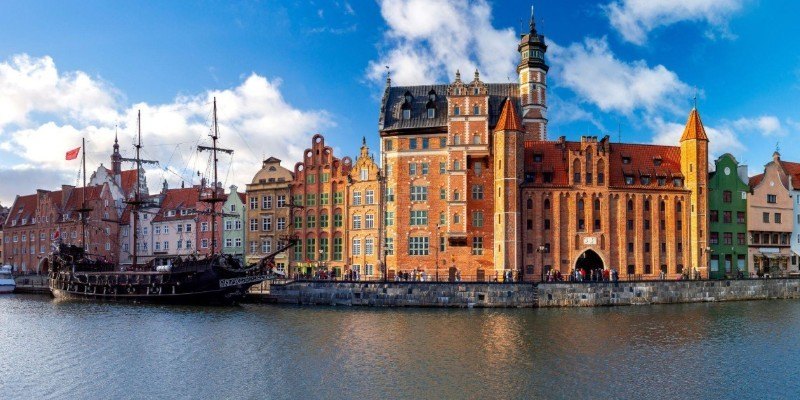Finding a New Home: The Reality of Coming to America
Leaving one's homeland is never easy. A mix of dreams, desperation, and necessity often fuels the decision to move to America. For many, it is the promise of a better life—a fresh start away from poverty, political turmoil, or personal hardship. Others arrive with professional ambitions, seeking opportunities that their home countries cannot provide. Regardless of the reason, coming to America is a defining moment filled with both hope and uncertainty.
The journey to America takes varied forms. Every story is unique, but the struggle to belong is universal. The early days are a culture shock scenario, with unfamiliar streets, language barriers, and cultural impacts. Far from glamour screen productions, immigration often involves maneuvering the bureaucracy and starting from scratch in a foreign country.
The Immigrant Experience: Learning to Navigate a Different World
Adapting to a new culture is one of the hardest aspects of immigration. Language barriers can make even the simplest tasks—like buying groceries or asking for directions—feel impossible. Many immigrants struggle with communication, relying on gestures, translation apps, or community support. Those who already know English still face difficulties understanding slang, accents, and cultural nuances.
Beyond language, social integration becomes another issue. It takes some time to gain friends and associates. Customs and social expectations here in the United States can vary greatly from their previous country. Some feel it is a lot more individualistic and that personal space and independence are key. This comes as a culture shock for some who are moving from collectivist cultures where the family and the community are core to daily living.
Employment is yet another barrier. Foreign degrees and diplomas may not be valid here, leading the highly trained individual to a janitor's position in a restaurant, to constructing buildings, or to a maids' room. Some of the finest engineers become taxi drivers; doctors end up selling pizzas or tending at stores. That's a reality some have had to face simply to be alive. The path to professional status is long and fraught with challenges, from credential evaluations to expensive licensing exams. Yet most immigrants continue, sustained by the hope that their sacrifices will pay off in the long run.
Chasing the American Dream: Reality vs. Expectation
The American dream is one of the most powerful motivators for those coming to America. It represents the idea that hard work and determination can lead to success, regardless of background. Many immigrants arrive believing that the U.S. is a land of endless opportunities. While this is true in many ways, reality often proves to be more complicated.

Discrimination, economic inequality, and systemic barriers make success harder to achieve than expected. Immigrants often face workplace exploitation, earning lower wages than American-born workers. Some struggle with housing discrimination, making it difficult to find safe and affordable places to live. Others battle social prejudice, dealing with stereotypes and assumptions based on their nationality, race, or accent.
Despite these obstacles, countless immigrants do find success. They build businesses, earn degrees, and contribute to their communities. Some achieve financial stability, while others leave a legacy for the next generation. Success stories exist, but they are often built on years of perseverance, sacrifice, and resilience.
For many, the American dream is not about becoming wealthy but about having choices. It is about being able to provide education for their children, access better healthcare, or simply live in a society where basic human rights are protected. The dream evolves, shifting from personal success to creating a better future for the next generation.
The Emotional Toll of Leaving Everything Behind
Moving to another country is more than a physical transition; it is an emotional upheaval. Leaving behind family, friends, and familiar surroundings can lead to deep loneliness, especially in the early months. Holidays feel empty without loved ones, and time zone differences make staying connected difficult.
Many immigrants carry guilt—guilt for leaving aging parents, missing important moments, or not being there in times of need. At the same time, they feel immense pressure to succeed, often sacrificing their well-being to send money home. Some eventually adapt, building new support systems, while others live with an enduring sense of displacement. The emotional weight of immigration is often unseen but remains one of the toughest challenges immigrants endure.
Building a New Life and Finding a Sense of Belonging
The true challenge of immigration is not just about making a living—it is about finding a place to call home. Over time, immigrants learn to bridge two worlds. They hold onto their native cultures while embracing aspects of American life. Food, music, and traditions keep them connected to their roots, while new experiences shape their identities in unexpected ways.

Communities play a vital role in this transition. Ethnic neighborhoods, cultural centers, and religious institutions provide a sense of familiarity and support. Whether it is a Chinese market in California, a Mexican festival in Texas, or an African church in New York, these spaces help immigrants stay connected to their heritage while adapting to their new environment.
At some point, many immigrants face the question of whether they truly belong. Some struggle with identity, feeling like outsiders in both their native and adopted countries. Others embrace a dual identity, finding pride in being both American and something else. The process of integration is complex, but for most, home is not just a place—it is the feeling of safety, acceptance, and the ability to dream again.
Conclusion
Coming to America is not just a physical journey—it is an emotional and psychological transformation. It is about facing fears, embracing change, and finding strength in adversity. While the road is often difficult, the resilience of immigrants is remarkable. They redefine what it means to be American, contributing to the country’s diversity, culture, and progress. The experience of immigration is different for everyone. Some find success quickly, while others struggle for years. Some stay, while others return home, realizing that happiness is not always tied to geography. But one thing remains true—coming to America is a life-changing experience, one that reshapes dreams, identities, and the very meaning of home.











